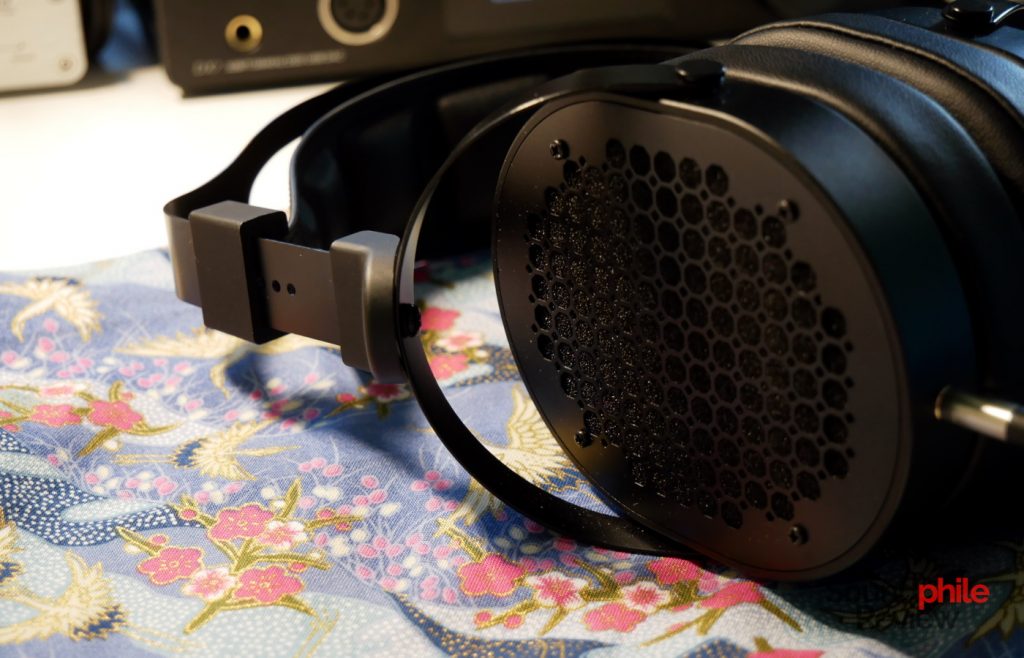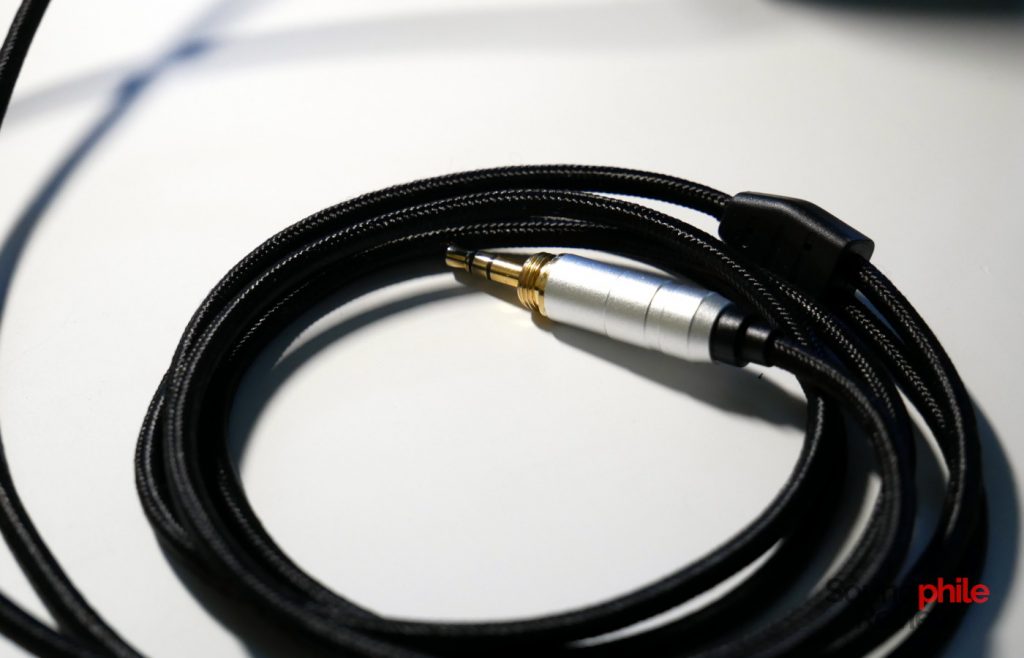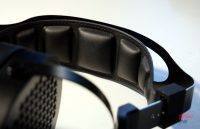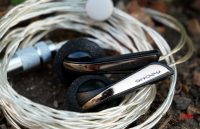It appears like the world of planar headphones is constantly expanding and new companies are boarding this train, admittedly loaded with hype (and a certain influence from current trends and fads). There is some merit to this, though, as planar headphones are possibly the best to reproduce bass in a linear and smooth fashion. Much of the innovation is coming from China, which is fuelling the lowering of prices; among the lower-end planar headphones recently launched are the Gold Planar GL600, small headphones that pack a punch.
Gold Planar appears to be a new brand created by an ODM which is already well-known in the audiophile scene as the manufacturer of Monoprice planar headphones. As those received quite a lot of praise, the GL600 should not disappoint. But let’s see how they behave!
Disclaimer: I received this unit from Linsoul, free of charge. The GL600 retail for $169.
TL;DR: recap
| Pros |
Cons |
| Comfortable
Very well built |
Muffled, congested sound
Excessive bass |
Rating: 7.3/10
Packaging & Accessories
The GL600 come in a rather large box – unnecessarily large, actually – which only contains the headphones and the cable. No case or bag is provided. It’s a rather spartan set of accessories, but given the entry-level price I did not expect anything too fancy.
Design & Comfort

If the Gold Planar GL600 looks like the Monoprice M565, it’s because they’re most probably derived from those. The general design is quite close, but there are some very noticeable differences in the details. To be more specific, the GL600 are entirely built out of metal, whereas the M565 have wooden earcups; the headband does not resemble quite as closely the ones from HiFiMAN and the metal frame is also as wide as the suspended headband itself. The earcups have a perforated design that’s certainly unique, but may not appeal to everyone – I’ve read quite a few negative comments in that regard. It’s highly subjective, so you have to decide for yourself – hey, this is an audiophile blog after all! I’ll leave design to designers.

Another thing I’ve seen mentioned is the worry about the build quality. Thankfully the Gold Planar GL600 appear to be built quite well: the metal is solid not only in its looks, but also in its substance. The only element of worry might be the plastic bits that cover the junction point between gimbal and frame. I took it apart in the name of science (it’s just two screws) and found out that the plastic is actually cosmetic. It has no other function than to cover the otherwise ugly junction. So I feel confident enough in saying that the build quality is quite good, especially if we consider that this is an all-metal build (as far as structural components are concerned) in sub-$200 headphones!

Comfort should be quite good for the general public, which means if you’re not like me and therefore you don’t have a scalp that screams in pain every time you try to wear headphones. Luckily I don’t review them as a hobby, that would be quite a nuisance. Oh, wait. Anyway, the headband has generous padding and a good width, so it’s more than decently comfortable even for relatively long listening sessions. The earpads are quite soft and the (presumably artificial?) leather is not too hot. The clamping force is quite high, but not as much as to cause discomfort – at least in my case. If this is of any indication, I am wearing glasses.
Isolation is – you guessed it – null. Hey, they’re open headphones, what did you expect?

The cable is decently good, as it’s soft and malleable. It’s covered with a fabric sleeve that should help make it more durable. The 3.5 mm jack can has a screw thread so that one can transform it into a 6.3 mm jack (though the adapter was not included in the box).
Sound & Specs
I tested the Gold Planar GL600 using various equipment, including a Topping DX7 feeding a THX AAA 789, an iFi nano iDSD Black Label, a Burson Audio Playmate and a Shanling M2X. Source files were the same in all cases and were mostly FLACs (16 bit, 44.1 kHz).
Gold Planar GL600 |
| Frequency response | 6 – 50,000 Hz |
| Impedance | 22 Ω |
| Sensitivity | 100 dB |
The driver uses a 66 mm diaphragm with a proprietary construction method that makes “the ultra-thin nano-membrane even more responsive, providing a more life-like soundstage, improved resolution, and a fullness in sound across the entire frequency spectrum”. Now, as we’ll see things are not quite like that, but it seems like the company was able to create a sensitive driver that one can drive with almost any device.
The Gold Planar GL600 present the listener with a bass-heavy signature that privileges the lower end leaving midrange, and especially upper midrange, in the back. It’s quite a polarising signature – some may consider it “fatigue-free”, given there is little presence in the upper area, while others may consider it lacking as midrange appears dull and blunt.
Despite being open-back, the GL600 do not offer a very large soundstage and instead limit width and depth to a relatively low extent; width is in fact limited and instruments appear quite close to the listener, while depth is just hinted at. Imaging is good in terms of positioning between channels, with a good variation of positions, but limited in terms of giving each instrument its own specific place. Instrument separation is decent, but hindered by the tuning which makes it difficult to discern the various instruments when the track is even moderately complex.
Are you looking for fun? Then bass on the GL600 will be quite interesting to you: it is deep and very much present while also offering good physicality. It’s almost cumbersome in the sense that it’s preponderant and tends to get in the front even when it should not. Case in point: Adagio from Concerto Grosso Op. 6, No.8 in G Minor “Christmas Concerto” by Corelli (from the Master and Commander soundtrack), where the bass from double bass gets in front of the violins which should, however, be front and centre. In terms of quantity there’s certainly more than there should be. Quality, on the other hand, is quite interesting: bass is very decently fast, which also entails good physicality. Detail is adequate, but overall limited – it’s in line with my expectations for sub-$200 headphones, but on the lower end.
The excessive presence of bass is an issue to midrange, which it often overshadows and overpowers. Midrange has a weird tuning which privileges the lower area, but somehow completely misses the point in everything else. It seems like there is a somewhat large bump at the border with bass, but then there’s a slump that makes the middle and upper regions recessed and inoffensive – but not in a positive way. In fact this recession means that midrange is sometimes barely audible, and other times it’s just sounding off; most of the time it sounds muffled and muddied up. Practical example: Daft Punk’s Give life back to music, where the guitar being picked lacks incisiveness and appears blunted – it’s there, but it’s warmer than it should and sounds as if it wasn’t tuned properly. On the other hand, though, the level of detail is commendable: in that same track the pick hitting the strings does have a good speed (and also some physicality), while the background voices and noises are clearly heard.
Treble actually offers more than decent detail: there is a good amount of small details in cymbals, though no micro-details. Extension is decent, but extension is far from perfect as there is a very low presence in the upmost area. Treble often sits in the background, mostly in line with midrange, so it’s not really noticeable and you really need to pay attention to it to hear the various details. This may also be a concurrent cause of the limited soundstage. Overall it’s pleasing, but it’s for those who prefer a tamed treble than for those who look for rich and lively highs.
Gold Planar GL600 Comparisons
As I don’t have any other planar headphones in a similar price bracket, I’m gonna compare the GL600 to pricier planars and similarly-priced dynamic headphones:
- Gold Planar GL600 vs AKG K7XX: despite there being a price difference of just $30, the AKG K7XX appear to be much, much better on almost every front. The only exception might be bass, which is deeper on the GL600; although it is more detailed on the K7XX, it is more physical on the GL600. Midrange is much more balanced on the AKG, despite them being not neutral and offering a bump in the lower mids. Detail is overall better on the K7XX, also because it is far easier to hear it due to the tuning. Treble is also arguably better on the AKG: although there is some sibilance, it’s generally more balanced and accurate, with a higher degree of detail. Soundstage is much, much, much wider on the K7XX, which also offer better imaging and instrument separation.
- Gold Planar GL600 vs HarmonicDyne Helios: the Helios are in some regards similar to the GL600, but they’re also quite different in others. Bass is similarly emphasised, but it’s deeper on the GL600; the Helios offer more physicality, though, and a similar level of detail. Midrange is less recessed, but by a small margin – in both cases it appears distant and muffled, with a larger presence in the lower region, but the Helios also have a bit of emphasis in the upper region. Treble is a bit more pronounced on the Helios, which offer a similar level of detail and similar extension. Soundstage is slightly wider on the Helios, but similarly deep (which is to say: not deep), while imaging is similarly limited in instrument placing, as is instrument separation.
- Gold Planar GL600 vs ThieAudio Phantom: despite being rather dark and having issues with the midrange, the Thieaudio Phantom emerge as an overall better alternative to the GL600 – understandable, given they’re twice the price! Bass is less emphasised, especially in the mid-bass region, with similar depth and better detail and layering. Although I don’t really like the Phantom’s midrange, it emerges at definitely more balanced and forward than the GL600… which is quite telling! Although there is a good emphasis on the lower mids, the Phantom deliver a better balance that allows for instruments to emerge more clearly. Treble is less emphasised, while also being more detailed, although extension is similarly lacking. Soundstage is wider and imaging and instrument separation are better on the Phantom. Overall I don’t like either of the two, but the Phantom are much better at practically everything.
Final Thoughts
Overall the Gold Planar GL600 are a mixed bag. They do have some interesting things going on for them, such as a very fun and enveloping bass (it’s great for films and games!), a metal build and a subjectively interesting design. But the same bass that makes the signature fun also makes the headphones quite limited in what they can do – they’re a one-trick pony that plays well with a limited amount of genres. They also cater to a very specific public and you may want to skip them if you like to correctly hear midrange and treble. If you are looking for something bass heavy, though, the GL600 may be a good choice: they have most of the stereotypical features of planar headphones that make them so appealing (speed, physicality, detail, bass depth, etc). Otherwise, I would not recommend them: their signature is too polarising to be viable, on top of being the umpteenth example of V-shaped Chi-Fi.









This review does not jive with my experience with the GL600. Bass on mine is in line with the midst &treble though slightly soft is very engaging & quite detailed. Only problem areas are slightly muffled lower midrange & a peak around 1-2KHz that can make some voices shouty but otherwise performance is engaging.
Plastic on either end of headband supporting earcups is not merely cosmetic. They provide the anchor points for the screws that hold the earcups to the headband. If these fail the earcups will separate from headband making headphone unusable. Yes I have taken them apart in order reach screws required to fix comfort strap which came separated from their mount at one end. Not an easy task to reassemble earcups back to headband for me as I had a stroke 10 months ago.
I do agree though joint is not pretty. I wish they had used metal to do the covering & retaining the earcups to the headband & not some cheap pot metal either as that would be no better than the plastic they did use.
I also disagree with the assertion that these only do bass well though they could have used more effort in tuning the drivers. I added a substantial amount of resistive tuning to bring the bass & midrange down to where the treble can also shine. Midrange was ok but somewhat masked by bass at lower end & shoutyness at the upper end physical resistive damping cured all of that & the treble is at proper level where it can shine nearly as well as the best electrostatics.
Hi Ronald,
I remember I took the headphones apart, removed the plastic bits and put them back on and they would work normally, so I am pretty sure that the plastic bits are cosmetic – or they are not structural anyway and can be replaced by a single bolt. I don’t have them on hand now and won’t have them for a long time, so I can’t check to be 100% sure.
So you are saying that what I say isn’t true because you basically completely altered the tuning and now they sound good? Well, you know, if anything that proves that what I say is in fact true – otherwise you wouldn’t need to alter their tuning at all, right?